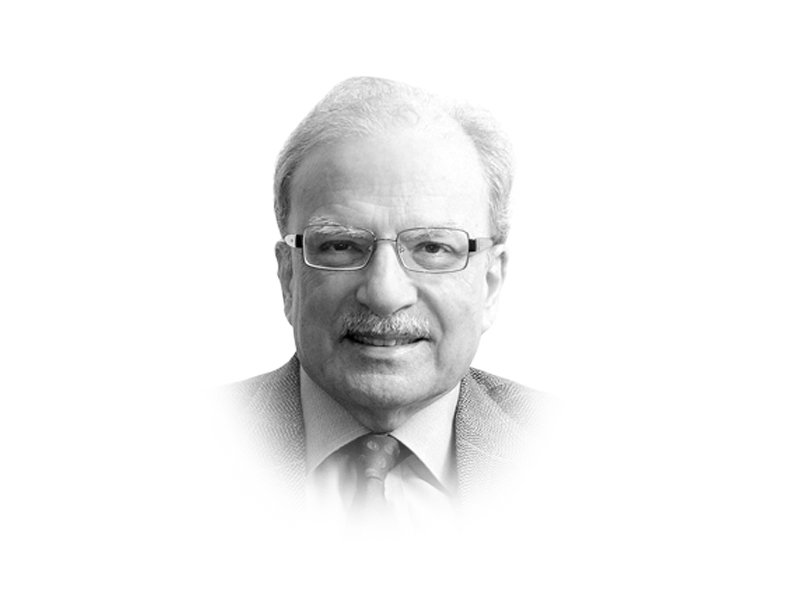
Following the massacre in Peshawar of almost 150 students and teachers on December 16, 2014, the government has decided to launch a 20-point National Action Plan (NAP) with the aim of ridding the country of this scourge. Implementation of the plan has already begun. As the finance minister revealed, the NAP will cost the government a significant amount of money which was not budgeted and will impact the rate of growth. But this downward pull will be for the short term. If the NAP succeeds in its stated objectives, it will have enormous long-term positive consequences. The most important of these will be the revival of investor confidence in the country’s economic future.
As economists never fail to point out, confidence is by far the most important determinant of economic performance. With terrorism curbed, the country should see the rate of investment climb from the abysmally low 8.6 per cent of the GDP. For the country to achieve a rate of increase in national product of between six to eight per cent, it will need to invest between 28 and 30 per cent of the GDP. It will also need to improve the productivity of investment. This is where technology enters the picture. Before indicating the public policy choices that need to be made to put technology at the service of the Pakistani economy, I will take a brief detour into the history of economic thought.
Pioneers of development economics based their growth models initially on two factors of production. Arthur Lewis, the West Indian economist who went on to win the Nobel Prize, focused on the transfer of workers from agriculture to industry as one important way of increasing economic growth. His model of development was built on two assumptions: there was, he argued, a large surplus of workers in the countryside, working mostly in agriculture. Their productivity was much lower than the labour employed in the urban economy. Simply moving workers from villages to cities and towns would increase output without decreasing agricultural production.
Capital was the other factor of production. This was in short supply in poor countries; to increase it, these economies had to invest much more in the economy. But their savings rates were low. To get these countries out of this vicious cycle, external capital flows were needed. That a two-factor production equation was enough to explain growth in the economies was questioned by the American economist Robert Solow.
Pakistan has missed a number of opportunities to join the high-performing countries of Asia. It did not develop an industrial base that could have produced goods in high demand in the large markets of the developed world. This was what propelled forward the ‘miracle economies’ of Asia. It also missed the opportunity made available by what the American journalist Paul Friedman called the “flattening of the world”. By this, he meant how the well-trained youth in Asia’s populous countries could use the internet to provide services to the increasingly labour-short economies in the developed world. Outsourcing won India and the Philippines rich rewards in terms of generating reasonably well-paying jobs for the young while also earning large amounts of foreign exchange.
The country could catch up employing technology for promoting growth and development. Policymakers must understand how the global production system has changed and will continue to change. To take just one example, Pakistan, using information and other technologies, could enter the supply chain for the large automobile industries of China and India. I will elaborate on this point in later articles.
Published in The Express Tribune, January 26th, 2015.
Like Opinion & Editorial on Facebook, follow @ETOpEd on Twitter to receive all updates on all our daily pieces.
COMMENTS (6)
Comments are moderated and generally will be posted if they are on-topic and not abusive.
For more information, please see our Comments FAQ













All problems will be solved if the energy crisis is solved.
Our Policy makers are made of " illiterate class of Politicians " who can barely think beyond his own constituency & you Mr Burki expects them to become policy makers ? there are so many examples where many institutions & depts made policies only to be put to the back burner....so on what basis are you suggesting what ever you are suggesting Mr Burki ? are you not aware of the quality of people we have or just being naïve ?
With due respect to the author, who intended to quote NYT columnist Thomas Friedman, let's summarise what's been said (or regurgitated from several places):
Pakistan is in trouble. Growth can be accelerated with industrialisation. Off-shoring can be beneficial, case in point is India, Phillipines etc. Author promises to lay out some suggestions in his next article.The reader is left wondering what the point of this article is? But then again, the author seems to be at par with Mr. Friedman. Thomas Friedman is the Carrie Bradshaw of current events. Think Sex and the City , write ‘Sects and Tikriti.’”
The World is Flat is a book by the New York Times columnist Thomas Friedman, and not Paul Freidman as Mr. Burki has listed.
It was Thomas Friedman who said "the world is flat" and not Paul Friedman